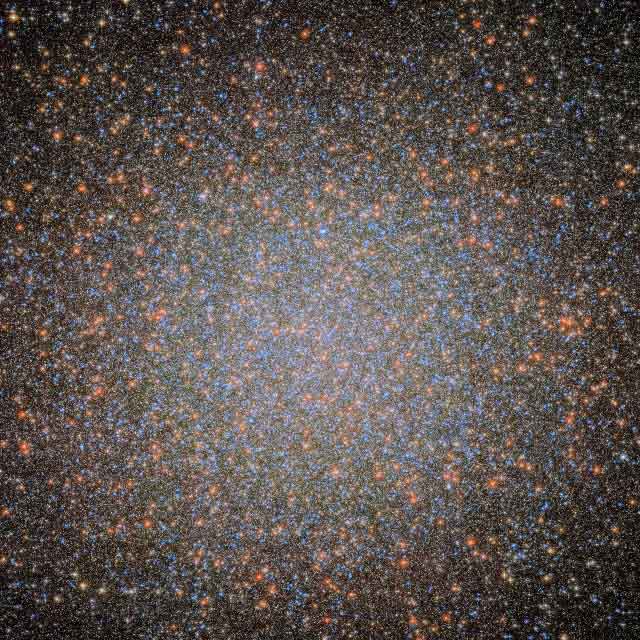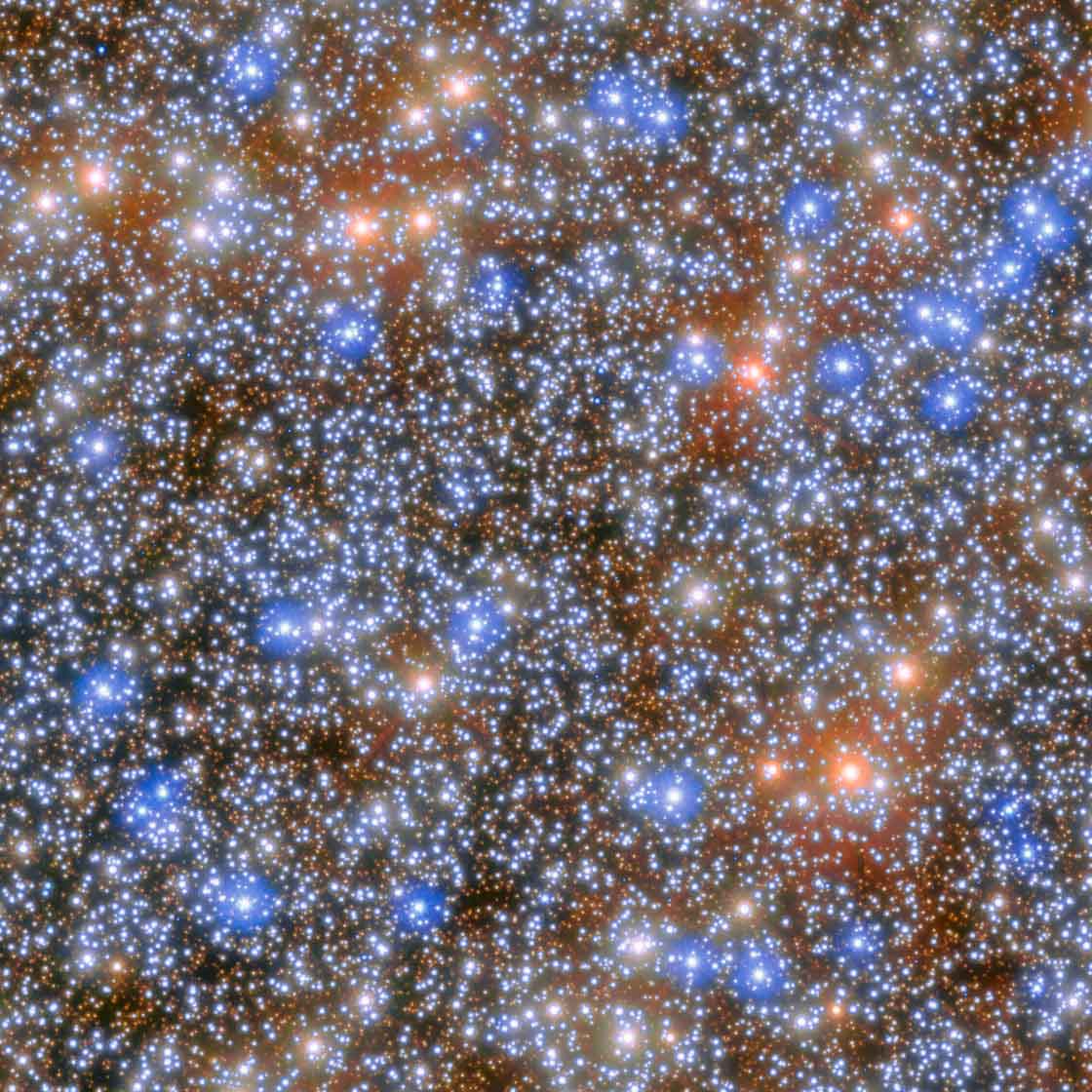Most known black holes are either extremely massive, like the supermassive black holes found at the cores of large galaxies, or relatively light, with masses less than 100 solar masses. However, intermediate-mass black holes (IMBHs) are rare and are considered rare “missing links” in black hole evolution.
An international team of astronomers used more than 500 images from NASA’s Hubble Space Telescope spanning two decades of observations to search for evidence of an intermediate-mass black hole by tracking the motion of seven fast-moving stars in the innermost region of the globular star cluster Omega Centauri, the journal Nature reports.
These stars provide compelling new evidence for the gravitational pull of the intermediate-mass black hole that is tugging at them. Only a few other IMBH candidates have been discovered to date.
Omega Centauri is made up of about 10 million gravitationally bound stars. The cluster is about 10 times more massive than other large globular clusters—almost as massive as a small galaxy.
Among the many questions scientists want to answer: Do IMBHs exist, and if so, how common are they? Do supermassive black holes grow from IMBHs? How do IMBHs form? Are dense star clusters their preferred home?

Omega Centauri is about 10 times more massive than other large globular clusters – almost as massive as a small galaxy – and contains about 10 million stars bound together by gravity. ESA/Hubble, NASA, Maximilian Heberle (MPIA)
Astronomers have now created a huge catalog of the motions of these stars, measuring the velocities of 1.4 million stars gleaned from Hubble images of the cluster. Most of these observations were intended to calibrate Hubble’s instruments rather than for scientific use, but they have proven to be an ideal database for the team’s research efforts.
“We found seven stars that shouldn’t be there,” explained Maximilian Heberle of the Max Planck Institute for Astronomy in Germany, who led the study. “They are moving so fast that they would leave the cluster and never return. The most likely explanation is that a very massive object is gravitationally pulling on these stars and holding them close to the center. The only object that could be that massive is a black hole, which is at least 8,200 times the mass of our Sun.”

This image shows the central region of the globular cluster Omega Centauri, where NASA’s Hubble Space Telescope has found strong evidence for an intermediate-mass black hole candidate. ESA/Hubble, NASA, Maximilian Heberle (MPIA)
Several studies have suggested the presence of an IMBH in Omega Centauri. However, other studies have suggested that the mass may be due to a central cluster of stellar-mass black holes, and suggested that the lack of fast-moving stars with speeds greater than the necessary escape velocity makes an IMBH less likely in comparison.
“This discovery is the most direct evidence yet for an IMBH in Omega Centauri,” added team leader Nadine Neumayer of the Max Planck Institute for Astronomy in Germany, who initiated the study with Anil Seth of the University of Utah in Salt Lake City. “This is exciting because only a few other black holes of similar mass are known. The black hole in Omega Centauri may be the best example of an IMBH in our cosmic neighborhood.”

An international team of astronomers used more than 500 images from NASA’s Hubble Space Telescope spanning two decades of observations to discover seven fast-moving stars in the innermost region of Omega Centauri, the largest and brightest globular cluster in the sky. These stars provide compelling new evidence for the presence of an intermediate-mass black hole (IMBH) that is gravitating toward them. Only a few other IMBH candidates have been discovered to date. This image shows the location of the IMBH in Omega Centauri. If confirmed, at 17,700 light-years away, the black hole candidate is closer to Earth than the 4.3-million-solar-mass black hole at the center of the Milky Way, which is 26,000 light-years away. Aside from the galactic center, this would also be the only known instance of multiple stars being closely associated with a massive black hole. This image includes three panels. The first image on the left shows the globular cluster Omega Centauri, a collection of myriad red, white and blue stars against the black backdrop of space. The second image shows details of the central region of this cluster, with individual stars in more detail. The third image shows the location of the IMBH candidate within the cluster. ESA/Hubble, NASA, Maximilian Heberle (MPIA)
If confirmed, the suspected black hole, 17,700 light years away, would be closer to Earth than the 4.3-million-solar-mass black hole at the center of the Milky Way, which is 26,000 light years away.
Omega Centauri is visible from Earth with the naked eye and is a favorite celestial object for southern hemisphere stargazers. Situated just above the plane of the Milky Way, the cluster appears almost as large as the full Moon when viewed from a dark rural location. It was first listed in Ptolemy’s catalogue nearly 2,000 years ago as a single star. Edmond Halley reported it as a nebula in 1677. In the 1830s, English astronomer John Herschel was the first to recognize it as a globular cluster.




